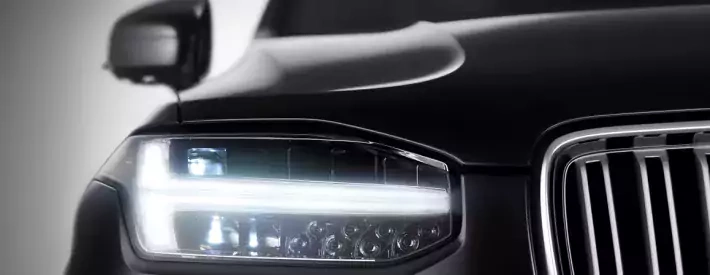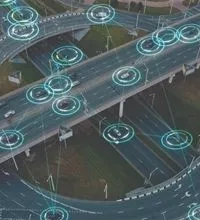Tripping the light fantastic

More than a simple bulb, more sophisticated headlamps are fast becoming a normal expectation for safer driving. There’s more than one way to illuminate the path ahead. Here’s a brief guide to the terminology and lights you may come across.
Headlamp technology is advancing as quickly as what powers vehicles, so MOT Testers need to be ready for whatever comes into their testing bay. Some of the systems are more technology dependent than others, the catch for all adaptive lighting is that they actively respond to changing conditions on the motorist’s behalf. As the Inspection Manual and MOT Guide are both live documents, it’s important to regularly check for changes. Some lamps are not testable, but if another testable lamp is affected by their operation, then that lamp is a reason for rejection. Here’s a guide for the lighting technology you could find on the next vehicle that’s presented.
Daytime Running Lights (DRLs)
Fitted to the front only, DLRs are designed to make vehicles more visible during the day and are testable items once they reach testable age. They can be tricky, even when not a testable item, as they are often housed in the same unit and can extinguish or dim to fulfil a side light role, which is not a reason for rejection. Take care and check the testing advice as some models will have specific methods of inspection.
Cornering lights
Cornering lights sit next to the main lights of the vehicle, switching on and off when cornering. They are fixed in position and activate in response to the steering wheel turn or activation of an indicator. They switch off when the turn signal cancels, or the driver returns the steering wheel to a straight position. This system has been available, mainly for luxury vehicles, for decades. These are currently not a testable item for MOT, which is a moot point if the vehicle is old enough for an exemption.
Curve-adaptive lights
Just for fun, these are sometimes referred to as cornering lights but are smarter than their earlier siblings. Curve-adaptive lights pivot the unit’s light source, mounted on motors or servos, toward the direction of travel to better illuminate the path ahead. Some go further by subtle changes in angle in relation to the vehicle’s speed and there are systems that can react to a detection of an upcoming curvature in the road. They can use the existing front fog lamps or be incorporated into the headlight unit. Curve adaptive functionality is currently not a testable item and are tested as per the manual.
Automatic high beams
The vehicle has the high beam set by default, switching to dipped beam when sensing another motorist by using sensors to detect the lights of other vehicles. The system can be manually overridden, and headlamp controls used in the conventional way if preferred, or if environmental conditions mean they don’t switch from main to dipped fast enough and cause dazzling. Although it’s necessary to switch to the manual operation for testing, changing it back to the motorist’s preferred position is a nicety.
Adaptive Driving Beams (ADB)
What makes ADB different is that the units are made up of many individual, very bright, adjustable LED lights in an array. The precision control software reacts to sensors fitted to the vehicle, creating brightness around other vehicles but projecting a “shadow” where dazzle to other motorists could occur. Instead of simply switching LEDs on or off, each one dims or brightens according to need, maximising brightness while reducing glare for oncoming traffic. Inoperative LEDs are not necessarily a reason for rejection, presentations with up to half not working can be issued with a minor.
Do all these lighting technologies make a difference?
Evidence suggests that insurance claims are reduced in vehicles with adaptive headlights, and it’s one less task for a motorist to concentrate on, leaving them to focus on the road while being considerate of other road users. Generally, the more complex the technology, the more expensive it is to design, install, maintain, and repair – but like ABS, it’s already filtering down the model ranges and due to the safety aspect, it may become a standard expectation in a short space of time. That means MOT Testers need to stay up to date and ready for when the technology arrives in their workshop.




